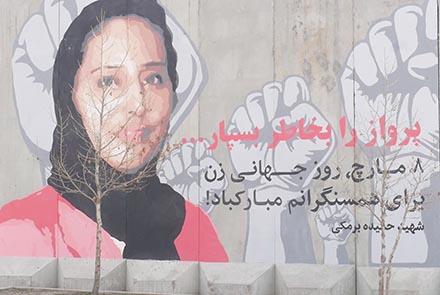A mural of slain Hamida Barmaki, who was killed in a Hizb-e-Islami suicide bombing six years ago, was painted on a T-wall close to the home of the group’s leader Gulbuddin Hekmatyar on Sunday.
The mural was painted by Kabul’s Artlords to mark International Women’s Day and to reflect crimes being carried out in the country.
Artlords founder Omid Sharifi said they painted the mural of Barmaki, who was killed in the Finest supermarket bombing, in order to remember “crimes of those criminals who have killed innocent people, but who are today in power.”
Sharifi said in the next three months they will paint murals of other suicide attack victims on walls in Kabul and provinces.
“We want to be a voice for the people through our art. We want to make sure that those who are in power hear this voice and feel ashamed. They should know that people have not forgotten the crimes that they have done during the past years,” said Sharifi.
Barmaki was killed six years ago along with her four children and husband in the supermarket bombing. Hizb-e-Islami claimed responsibility for the attack.
Barmaki at the time was a lecturer of law and political science at Kabul University and was a commissioner at the Afghanistan Independent Human Rights Commission.
A number of Kabul residents said Barmaki’s mural on the wall near Hekmatyar’s house reveals untold pain of thousands of people who have suffered and who have lost family members during the war.
They said the mural of Barmaki indicates that people have not forgotten the brutality committed by Hekmatyar and other warlords.
“By painting this mural they wanted to show that crimes by Hekmatyar and other (warlords) have not been forgotten,” Shah Zaman Frozan, a Kabul resident said.
“This mural asks why were Barmaki and hundreds of other people killed by these criminals? What were their sins?” Ali Jan Ahmad, a resident of Kabul said.

